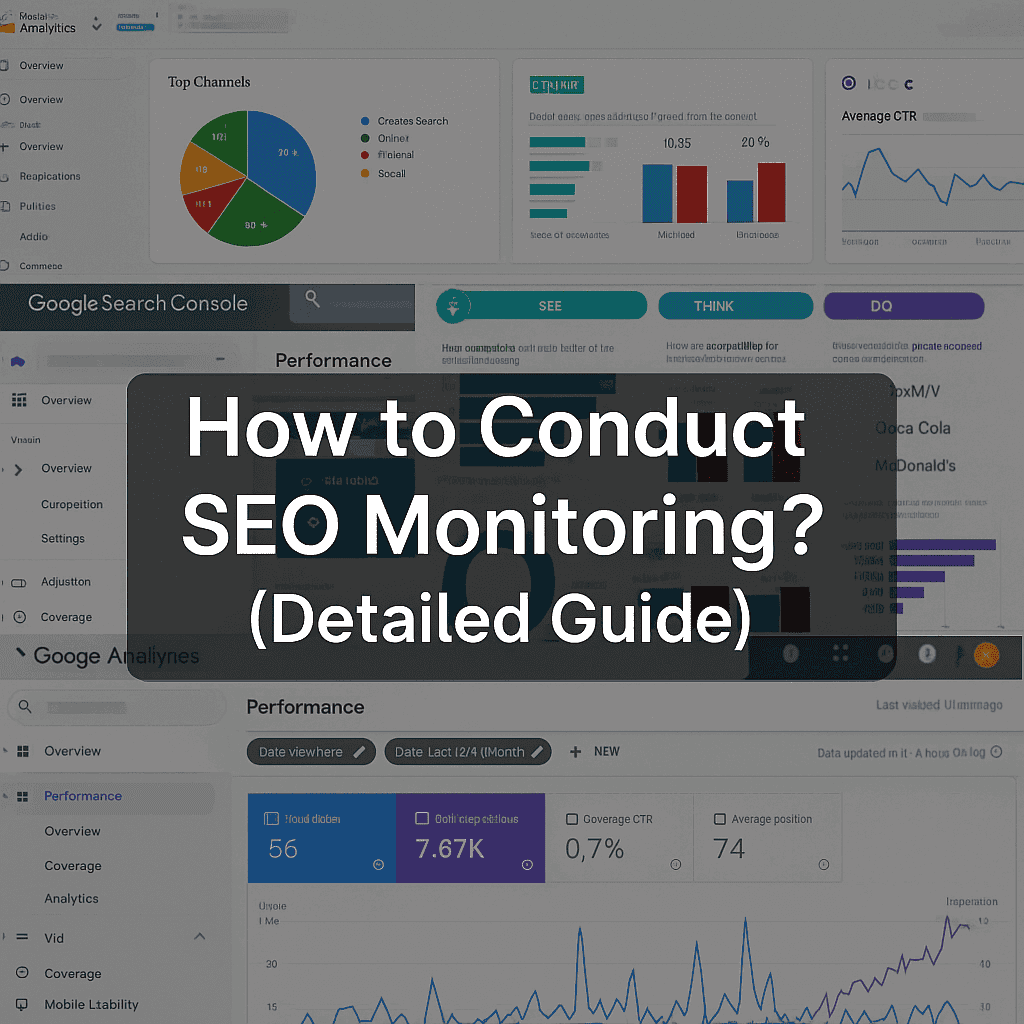While managing projects at digital agencies, I noticed something during job interviews with candidates for SEO positions: How they organized the data they collected and how they presented this data to managers or teams was just as important as their level of technical knowledge. That’s why I would often ask them, “How do you manage the SEO monitoring process?”. Unfortunately, many candidates couldn't give a satisfying answer to this question. Yet, this is no secret ; it is simply a critical stage that needs to be implemented and coordinated correctly.
The basic contents expected in SEO reports are as follows:
- Organic traffic trend (Analytics data)
- Keyword performance (Search Console data)
- Top traffic-generating pages
- Page speed and Core Web Vitals results
- Technical errors / warnings (404, noindex, canonical, etc.)
- Backlink / external link development (from 3rd party tools, if any)
It is not enough for the candidate to only present a table. What is important is their ability to interpret this data by turning it into a story. For example, deductions such as: “Last month, the speed of these pages dropped, which caused the bounce rate to increase. We recommend X action as a solution.” show the candidate's skill in giving meaning to the data and help them stand out.
In this article, I will discuss how to conduct
SEO monitoring and why it is so critical , a process much more important than just preparing an SEO report. If you are ready, let's begin...
In long-term SEO efforts, the most important building block of monthly reports is the data obtained from the regularly executed monitoring process. SEO monitoring is actually the stage before the data you see in reports is organized, checked, and continuously tracked. This process includes not only data such as
keyword rankings, bounce rate, and organic search , but also technical indicators like
page speed and uptime. The main issue here is being able to track all this data within a regular system and make it actionable.
The Evolution of the SEO Monitoring Concept
In the past, SEO monitoring was mostly understood as "ranking tracking". In other words, where are we ranking for a given keyword. However, as the importance of Google’s algorithm updates, mobile-first indexing, and metrics like Core Web Vitals has increased over the last 5–6 years, the concept of monitoring has also expanded.
Today, SEO monitoring includes the following:
- Performance data: Search visibility, traffic, conversion
- Technical health: Uptime, page speed, errors
- Content changes: Changes in critical areas like title, meta, robots.txt
- User experience: Core Web Vitals, mobile compatibility
The emergence of tools like
RobotAlp is also a result of this development. Now, not just rankings, but the entire site is monitored from an “SEO health” perspective.
Essential Tools and Data Sources

Google Search Console (Webmaster Tools) is the most fundamental tool for monitoring organic performance. It provides keyword-based data on clicks, impressions, CTR, and average ranking. You can also view site errors, indexing issues, and mobile compatibility reports here.
Google Analytics is a critical resource for understanding user behavior and on-site performance. Here, you can track the organic traffic's effect on conversions, which pages users spend time on, and metrics like bounce rate.
PageSpeed Insights / Lighthouse is Google's own performance testing tool. It is necessary to regularly test page speed and Core Web Vitals scores using PageSpeed Insights. Since these metrics directly affect rankings, they must be included in the monitoring system.
Looker Studio (Data Studio) can be used to transform all this data into meaningful and visual reports. Data from Search Console, Analytics, and other sources are combined on a single dashboard, making it very easy to track trends on a weekly or monthly basis.
Advanced Monitoring Areas
Uptime Monitoring (RobotAlp): It is necessary to continuously track whether your site is online. You can experience ranking loss when the Google bot cannot reach your site. Performing uptime monitoring with tools like
RobotAlp to receive instant alerts for outages is critically important.
Pagespeed Monitoring (RobotAlp + Google Tests): Your site's speed should be measured not just once, but at regular intervals.
RobotAlp monitors your page speed and reports drops in this regard. You can conduct healthy monitoring by comparing this data with PageSpeed Insights results.
SEO Change Monitoring (RobotAlp): When changes made to critical SEO settings on the site, such as title, meta description, canonical, robots.txt, or noindex, are not noticed, serious traffic losses can occur.
RobotAlp automatically tracks and notifies you of these changes.
Monitoring Framework (Sample Structure)
- Daily: Uptime and speed monitoring (RobotAlp)
- Weekly: Checking Search Console & Analytics data
- Monthly: Looker Studio dashboard report and trend analysis
- Instant: SEO change monitoring notifications
In SEO, monitoring is not a mysterious method; it consists of systematic tracking using the right tools. You can build a powerful monitoring infrastructure by combining the features offered by
RobotAlp uptime, speed, and change tracking with Google tools like Search Console, Analytics, and PageSpeed. This way, you not only spot problems early but also make strategic decisions based on data.

